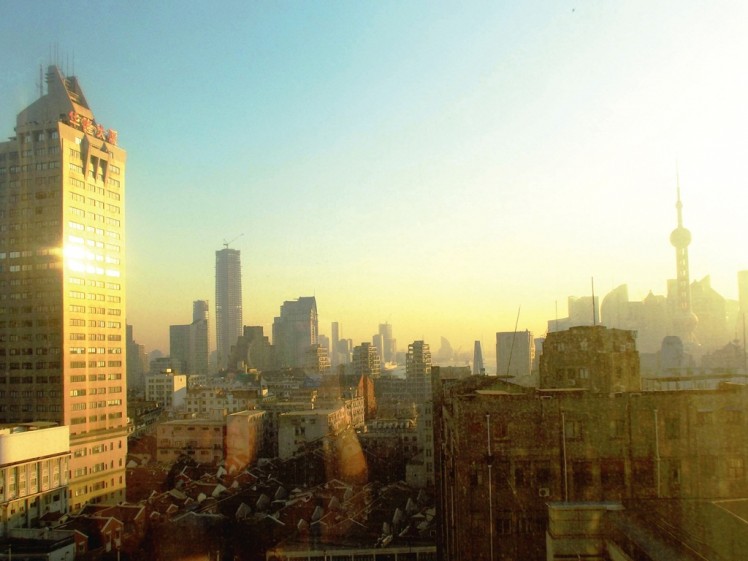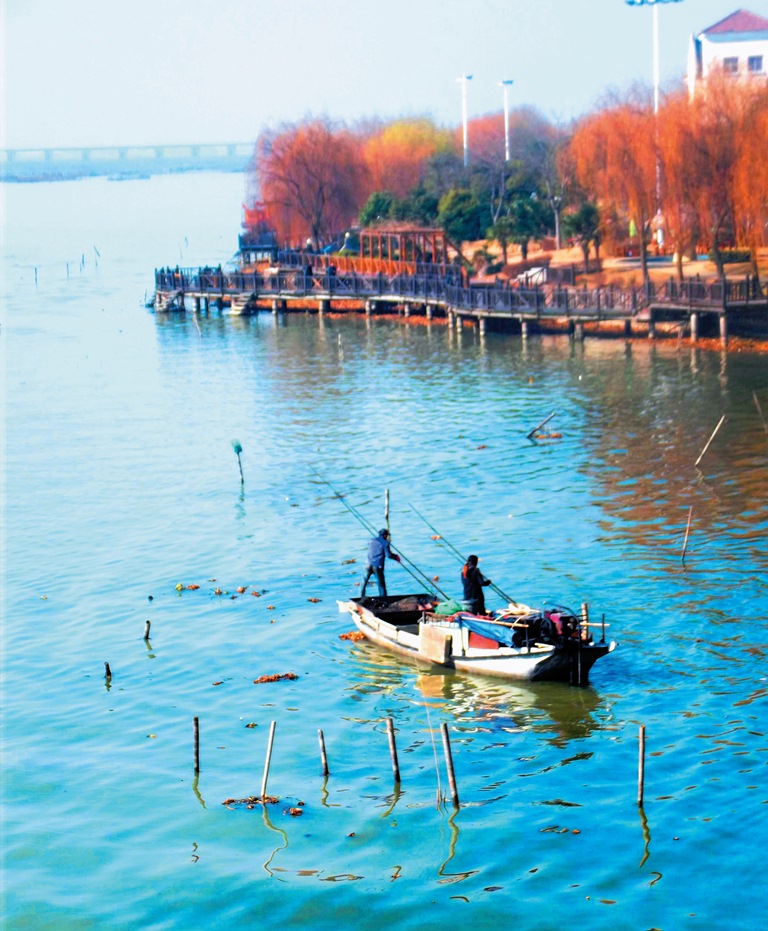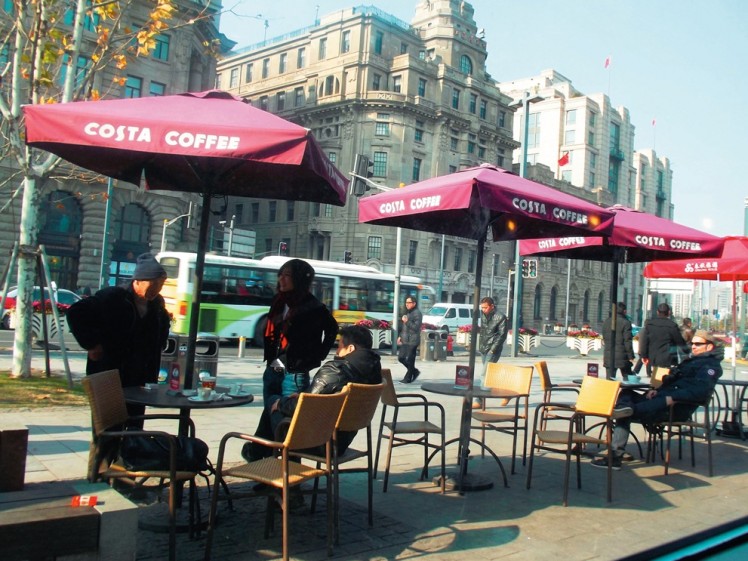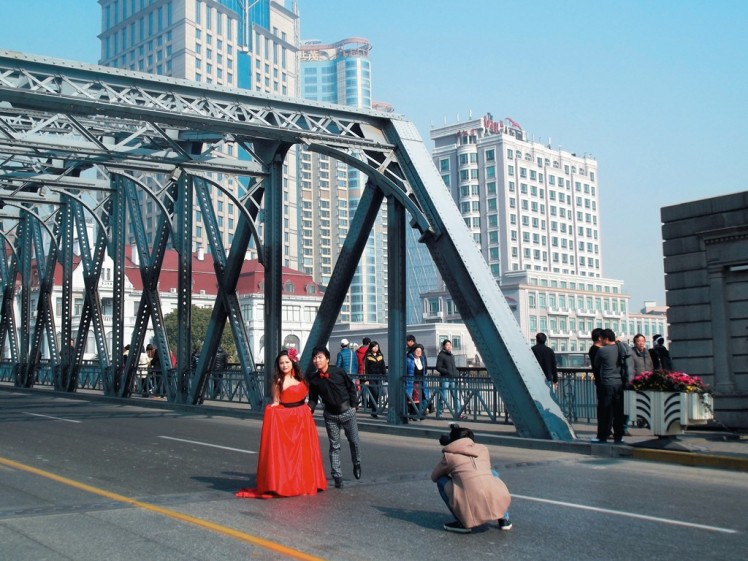A modern world city, Shanghai is also replete with beguiling history and echoes of its fascinating past. Paula Tan visits and finds herself charmed by this ancient yet contemporary Chinese metropolis.
The melody the band is playing sounds hauntingly familiar. Once, decades ago, couples danced cheek to cheek to it on this faded tiled floor. Today, it lives on night after night, rendered with all the romance of a bygone era by the world’s oldest jazz band at Shanghai’s dignified Fairmont Peace Hotel. Echoing through its halls, these pre-war songs continue to transcend time, much like the great city of Shanghai.
Outside on the street, Puxi’s colonial buildings remain little changed and mere meters away, the waterfront gives way to a view of a shimmering, space age city across the Huangpu River where Pudong lies – the contemporary face of Shanghai and its business district. Despite efforts to promote Pudong, Puxi, on the opposite bank, remains the city’s historic heart and cultural, residential and commercial centre. Shanghai’s famous Bund, the Shanghai Grand Theatre and Shanghai Museum are located in Puxi and it remains home to approximately 48% of Shanghai’s residents in an area of 288 kilometers. There is no better city to experience the energy and complex rise of China, and Shanghai, being more receptive, is a leading choice for expats in China, which adds to its cosmopolitan allure.
Despite being one of the world’s most modern cities, Shanghai retains its old world charm in pockets across the city. Chat with a friend as you meander your way across the leafy former French Concession vicinity, and bask in the quiet sunshine at one of its cafes while observing the world go by. Escape the present day with a stroll through the 16th-century Yu Garden, the Garden of Happiness, tucked within Nanxi, or the Old Shanghai’s surprisingly touristy Yuyuan Bazaar. Still a popular destination among the local crowd that throngs there for its street fare, the area is packed with dumpling shops, local fare and handicrafts. Yet, in the garden’s rambling five-acre complex, you will find your focus again in its silent halls and chambers, scattered with koi ponds and rockeries built in the traditional Suzhou style. If a taste of old China at Yuyuan leaves you yearning for more, take a day out, book yourself a car, and head out to Zhouzhuang water village in the Jiangsu Province, under two hours from Shanghai city. Believed to go back as far as 476 BCE, Zhouzhuang is one of China’s most famous water townships, often referred to as the Venice of the East with its scenic views and beautifully-preserved ancient houses that remain family homes. Enjoy a gondola ride across town as you are serenaded by lady boatmen, while rather commercial, remain a strong representation of working women in China.
Leftover history in China is plentiful and while in Shanghai, you can spot a sprinkling of it at the Dongtai Lu antique market. Reminiscent of a bootleg Antiques Road Show, Dongtai does not disappoint with its wealth of Cultural Revolution memorabilia, vintage curios, art deco and trinkets. You’ll have to navigate through a good deal of junk to unearth the gems, but there are very likely to be some diamonds in the rough. You may want to give the Rolex and Omega timepieces a miss, but if you can’t stop thinking about them, most stalls sell similar items. Compare prices. And haggle. Yet, even if you leave empty-handed, the very experience of strolling through these alleys is an experience that will stay with you. Just avoid the shoeshine lady who will stealthily try to smear polish on your shoes and insist on payment for finishing the job.
In the bustling metropolis that is Shanghai, history finds ways to be included in its façade. Located in the center of Shanghai City, south of Huaihai Zhong Lu, is Xintiandi, an urban attraction that holds on to the historical and cultural legacies of the city. At first glance a fashionable pedestrian street, Xintiandi is based on a unique concept as it retains the antique walls, tiles and exterior of old Shanghai’s Shikumen housing. In a surprising twist, its interior embodies a sophisticated modern world of galleries, bars and cafes, and boutiques. Combining the Shanghai of the 1920s and the fast-paced urban lifestyle of today, Xintiandi has become a favourite meeting point for locals and tourists alike.
Just two kilometers away from Xintiandi and much like it, Tianzifang is an enclave of over twenty varieties of finely-preserved Shikumen buildings in which many original residents still live. Having expanded from Lane 210 to Lane 248, it is also known as SOHO and features craft shops and galleries, antique stores and boutiques. Many eateries and silk shops in Tianzifang are operated by foreign owners, and its wealth of exotic foreign restaurants and cafes are a delight, featuring diverse menus with everything from goose liver pâté and fondue, to sushi and steak.
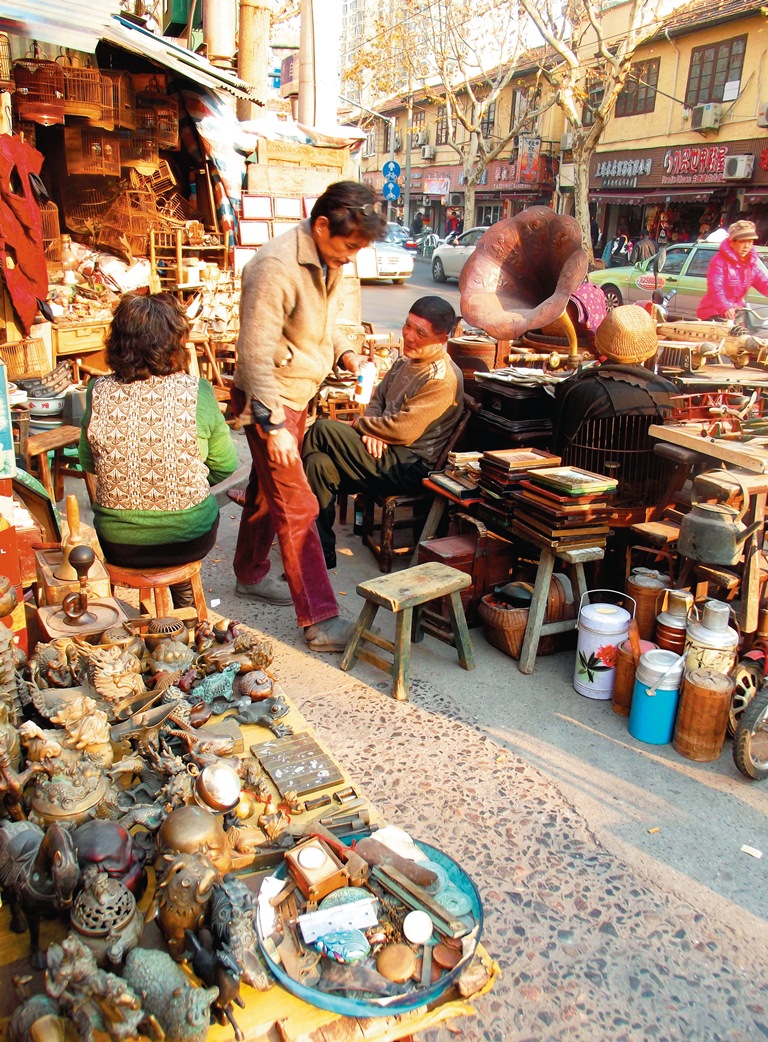
With the city’s impressive history, even Shanghai’s premier shopping street, Nanjing Lu, was first a British concession, then an international settlement in the wake of the Opium War (1839-42) after which Shanghai became a treaty port. Importing large quantities of foreign goods, it is not surprising that Nanjing Lu became Shanghai’s earliest shopping street. Today, its 5.5-kilometer stretch unfolds from the Bund in the east, and features the Forever 21 flagship store, H&M, Zara and other international highstreet labels, attracting thousands of shoppers from all over the world. Linked for several blocks by seamless paving, the inner area
is accessible by both foot and tram. If off-the-rack cramps your style, Shanghai’s famous tailors can whip up a custommade wardrobe in a matter of days. Get started on yours with a trip to the South Bund Fabric Market at Lujiabang Road, where vast reams of fabric and trimmings are to be found at bargain prices. Bring your favourite pieces and have the on-site tailors sew made-to-measure replicas in a day or more.
A block away from Nanjing Lu, the crowd continues to mill, spilling across the sidewalk on the Bund. Housing dozens of historical buildings from its colonial past, the Bund is the perfect place for a stroll and to marvel at the champagne lifestyle of the obscenely wealthy. Here, five-star occupants like Breguet and Chanel grace the Peninsula Arcade, where Porsches and Maseratis are all too common. Enjoy a macchiato at a waterfront café, then wander up to the deck for a dazzling view of the Pudong skyline against the brilliant blue of water and sky. Explore further by taking the high speed Bund sightseeing train, a visual delight that takes under five minutes to transport you beneath the river, across to the opposite bank where the famed Oriental Pearl TV Tower and space age spires sparkle in the sun.
As my attention is drawn to a young bride posing in the cold for a photo against the Huangpu, the nearby crowd jostles for snapshots of the memorial wreaths, laid to honour those who died in the recent New Year’s Eve tragedy here. Simultaneously, from a nearby store, the same melody played by the old jazz band at the Fairmont carries on the breeze. As we walk away, I contemplate the cycle of birth and rebirth, and somehow, I know that the spirit of old Shanghai will continue to live on, in history and in legend.
Shanghai (PVG) is well-served with direct flights (about 5.5 hours) from KL on Malaysia Airlines, AirAsia X, and a number of Chinese carriers. Nearly all visitors to mainland China require a visa. For information, visit www.travelchinaguide.com.
Read This: An Adventure in Pahang
Source: The Expat Magazine April 2015
"ExpatGo welcomes and encourages comments, input, and divergent opinions. However, we kindly request that you use suitable language in your comments, and refrain from any sort of personal attack, hate speech, or disparaging rhetoric. Comments not in line with this are subject to removal from the site. "



